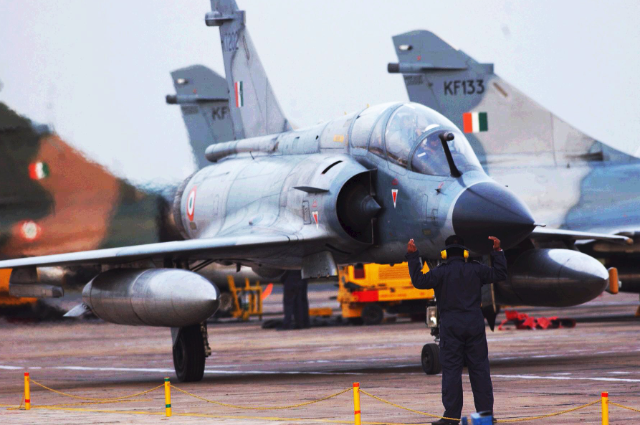In what can only be described as one of the most precarious moments in recent South Asian history, India and Pakistan stepped back from the brink of full-scale war, agreeing to a complete cessation of hostilities after four harrowing days that tested the nuclear deterrence doctrine like never before. The crisis, triggered by the devastating terror attack in Pahalgam on April 22, demonstrated once again how quickly tensions can spiral between our two nations, and how the shadow of nuclear weapons creates a terrifying urgency for de-escalation.
The Ceasefire: Whose Achievement Is It?
The announcement of the ceasefire itself became stuck in contradictory claims almost immediately. While former United States President Donald Trump took credit for agreeing on the the agreement, claiming it came "after a long night of talks" involving American mediation, India's Ministry of External Affairs was quick to set the record straight. According to our Foreign Secretary Vikram Misri, the understanding to halt all military operations was reached directly through communication between the Directors General of Military Operations (DGMOs) of both countries, without third-party involvement. In Gujarat, recently Pakistan has heavily deployed its military in the border
This distinction matters greatly for India's strategic autonomy and diplomatic positioning. The narrative of self-reliance in conflict resolution reinforces our nation's capability to manage its own security challenges without external interference, even in the most critical situations. At 3:35 PM few days back when aggression was again being shown, when Pakistan's DGMO initiated contact with his Indian counterpart, both military leaders agreed to cease all firing and military action across land, air, and sea with immediate effect from 5:00 PM IST.
The Ceasefire That Wasn't: Violations Begin Within Hours
In around MAY 12 , we had seen the ink had barely dried on this understanding when reports of fresh violations began emerging from the ground. Jammu and Kashmir Chief Minister Omar Abdullah's shocked response on social media, "What the hell just happened to the ceasefire? Explosions heard across Srinagar!!!" captured the confusion and anxiety that gripped the Valley as the sounds of warfare resumed.
By late evening, Foreign Secretary Misri was back before the media, his tone considerably grimmer than it had been just hours earlier. He confirmed that Pakistan had repeatedly violated the ceasefire understanding reached between the military leadership of both nations. These weren't isolated incidents or accidental discharges; they represented a systematic breach of the agreement that had barely come into effect. The Foreign Secretary made it abundantly clear that our Armed Forces were monitoring the situation with heightened vigilance and had been authorized to respond strongly to any further provocations along both the International Border and the Line of Control.
The seriousness with which India views these violations cannot be understated. Misri's statement called upon Pakistan to demonstrate genuine seriousness and responsibility in addressing these breaches and a diplomatic way of saying that Islamabad's credibility was now on trial.
Pakistan's Claims and Counter-Narrative
Pakistan, predictably, has its own version of events. According to their military spokesperson, Lt. Gen. Ahmad Sharif Chaudhry, Indian missiles and drones targeted three Pakistani airbases: Nur Khan in Rawalpindi, Murid in Chakwal, and Rafiqui in Shorkot. In a press conference held at 4 AM, he claimed that India had used air-to-surface missiles but that Pakistani air defences had successfully intercepted several of them.
While we cannot independently verify these claims, it's worth noting that Pakistan's defensive narrative conveniently ignores the sequence of events that led to India's strikes—namely, their own extensive attacks on Indian military and civilian infrastructure that necessitated our response.
India's Ministry of Defence reported drone sightings at 26 locations along the International Border and Line of Control, including several suspected armed drones. The locations spanned a vast geographical area: from Baramulla, Srinagar, and Avantipora in Jammu and Kashmir to Ferozpur, Pathankot, and Fazilka in Punjab, and extending to Jaisalmer and Barmer in Rajasthan, and Bhuj in Gujarat.
Most alarmingly, an armed drone deliberately targeted a civilian area in Ferozpur, injuring members of a local family. This incident highlights the evolving nature of cross-border terrorism, where sophisticated unmanned aerial vehicles are being weaponized to target civilians deep inside Indian territory. The explosion of drone technology has created new vulnerabilities that our defence establishment must urgently address.
Operation Sindoor: The Context of This Crisis
To understand the current escalation, we must recall Operation Sindoor, conducted in the early hours of May 7. This was India's targeted strike against terrorist infrastructure in Pakistan and Pakistan-Occupied Kashmir, a direct response to the horrific Pahalgam terror attack of April 22 that claimed 26 innocent lives. That attack, like so many before it, bore the hallmarks of Pakistan-sponsored terrorism designed to bleed India through a thousand cuts.
Operation Sindoor represented India's evolving doctrine of proactive defense , we will not simply absorb terrorist attacks and limit ourselves to diplomatic protests. When our citizens are massacred by terrorists operating from Pakistani soil with the support of their military-intelligence establishment, we reserve the right to strike at the source of that terrorism. Pakistan's subsequent military response, rather than reflecting on its role in sponsoring terror, chose escalation, bringing us to the brink of war.
As Sunday dawns over the subcontinent, there have been various warning already given to Pakistan over Sir Creek aggression and the guns have nominally fallen silent, but the fundamental issues remain unresolved. Pakistan's immediate violations of the ceasefire it had just agreed to demonstrate the unreliability of Islamabad's commitments. Our Armed Forces remain on high alert, ready to respond to further provocations.
Until that fundamental change occurs, India must remain vigilant, prepared, and willing to defend its people and territory against all threats. The ceasefire may have provided a temporary respite, but genuine, lasting peace remains a distant horizon in the troubled landscape of India-Pakistan relations.
. . .
References:

